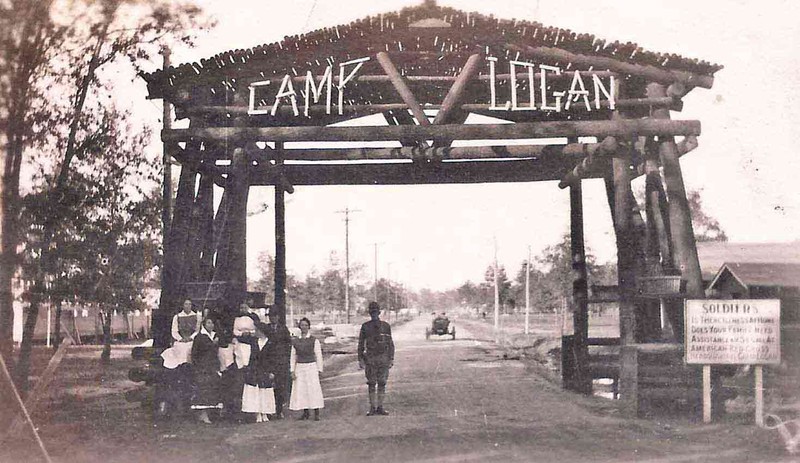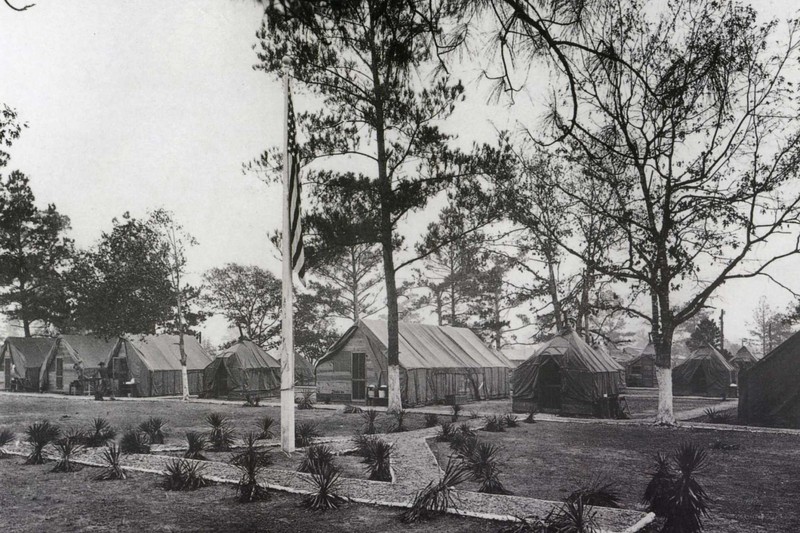Camp Logan
Introduction
Text-to-speech Audio
Images
An entry gate into Camp Logan

Soldiers and tents at Houston's Camp Logan

Barracks at Camp Logan

Backstory and Context
Text-to-speech Audio
In all, Camp Logan over 45,000 soldiers in the course of two years—drilling fresh-faced teenagers into soldiers ready for battle in the Great War. Close to the Galveston Ship Channel for convenient departures overseas, the emergency military training camp consisted of over 1,300 wood buildings and thousands of canvas tents that were built in a matter of six months. Within the completed camp, Soldiers had access to a bakery, a chapel and even a 9-hole golf course.
The men of the 24th Infantry were stationed to protect the construction site at Camp Logan in a segregated Southern city struggling with the idea of an influx of Black residents. But even on camp, the soldiers faced discrimination with the white soldiers and local construction workers refusing to drink from the same water source as the soldiers, shouting racial slurs at the soldiers while on duty and murdering a Black worker, which led to increased conflict. Commanding officer Colonel William Newman, fearful of escalating racial tension in the town, attempted to limit soldier visits to Houston and refused to allow his men to carry sidearms unless on sentry duty as an attempt to placate white residents. Tensions flared between the soldiers and Houston citizens.
Camp Logan was decommissioned a mere two years after it was built, its land later purchased by the Hogg family, who sold the tracts to the city at cost to establish a memorial park to honor the soldiers who fought in WWI. The foundations for the bakery ovens and bathrooms of the camp can still be found near Seymour Lieberman Trail, as well as the foundation of an old footbridge near the Picnic Lane loop. The Camp Logan Riot can be found mentioned in brief on a historical marker at the site today but is otherwise unaccounted for in any public spaces.
Sources
Rucker, Walter C.. Encyclopedia of American Race Riots. Volume 1. Greendwood Publishing Group, 2007.
The 1917 Houston Riot, Vamonde. Accessed October 19th 2020. https://www.vamonde.com/posts/the-1917-houston-riot/9721.
Squire, William S. "The 24th Infantry Regiment and the Racial Debate in the U.S. Army." Master diss., U.S. Army Command and General Staff College, 1997.
Robbie Morin, private collection
Robbie Morin, private collection
